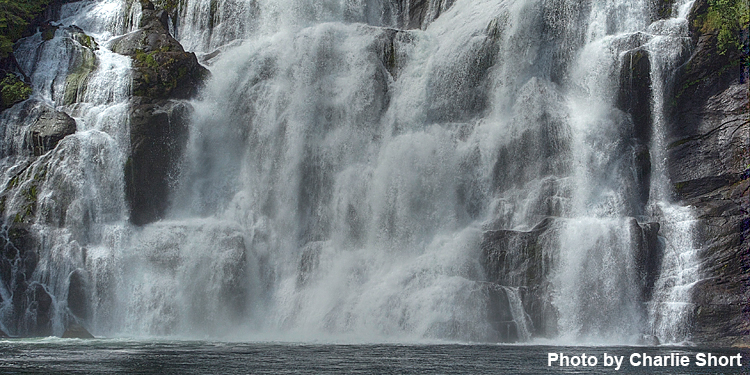Ecosystem-Based Management
Stretching for more than 250 miles along the coast of British Columbia, the 21-million-acre wilderness of the Great Bear Rainforest is sometimes called the Amazon of the North. The vast, sodden land encompasses 1 000-year-old cedars, waterfalls spouting off the sides of moss-covered mountains, granite-dark waters and glacier-cut fjords.
The land, sea and waterways are integrated and connected. Several elements of the environment – including old growth forests, grizzly bears, salmon streams, forest harvesting and tourism – are linked and impacted by human activities. The intent of ecosystem-based management (EBM) is to have fully functional and intact ecosystems while ensuring residents can continue to work and make a living in the area. This approach is key to the Great Bear Rainforest agreement and is based in science as well as traditional and local knowledge.
Now, with the Great Bear Rainforest land use order in place, 85% of the forests will be protected while at the same time providing economic opportunities and jobs for local First Nations and communities.
Some coastal animals synchronize their high-energy demands with the arrival of the spawning salmon. Reproduction is delayed among minks, for example, so the burden of nursing their young is timed during the salmon-spawning season. The story of salmon and its essential link to the rich diversity of marine life that thrives in the rainforest coastal, nearshore and offshore waters helps us to understand the value of this unique place.
Did You Know?
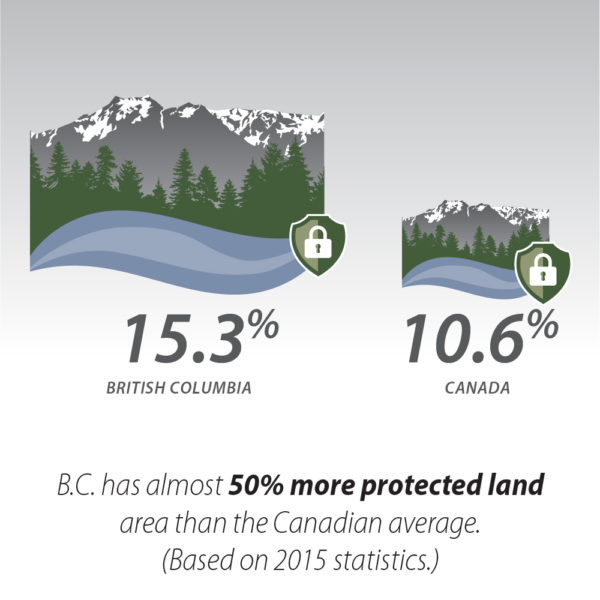
EBM is a highly specialized approach to managing natural resources and human activities. This approach considers the needs and wants of people while managing multiple environmental values at the same time. The approach is also adaptive.
EBM practices are monitored and fine-tuned over time to improve how human activities are managed to ensure the coexistence of healthy, fully functioning ecosystems and local communities.
Another major component of EBM is the government-to-government relationships with First Nations while recognizing and managing important First Nations’ cultural and heritage resources.
Ecosystem Protection
People along the coast depend on healthy ecosystems, both on land and in the ocean, for their livelihoods as well as for recreation and cultural activities. At the same time, people and industry – transportation, logging, fishing, urban development, agriculture – put pressure on the surrounding ecosystems. This pressure is greatest where most people live. In B.C., more than 40% of the land in Greater Vancouver has been permanently altered by human use. In contrast, only 2% of the vast land area of the B.C. coast has been permanently altered.
Protected areas preserve wilderness and protect wildlife. Protected ecosystems are also vital to ensure the flow of clean water, control erosion and flooding, regulate the climate and protect resources that enable economic activity. A protected ecosystem can also provide recreation, enjoyment and tourism income.
The rugged B.C. coast, with its complex geography of deep fjords and countless islands, is home to animals that live nowhere else on Earth. It is one of the most biologically diverse areas in Canada. Of all the species in B.C., two-thirds of the mammals and three-quarters of the freshwater fish live only in the coast region. One-quarter of all remaining coastal temperate rainforests in the world are found in B.C.
The climate in B.C. has warmed noticeably over the past half-century. Average air temperatures are warmer and ocean temperatures have increased along the coast. Projections for the 21st century show a continuing warming pattern. The climate is warming because rising concentrations of carbon dioxide and other greenhouse gases in the atmosphere trap more heat and warm the Earth.
For B.C., the changing climate means:
- Concern about freshwater and hydroelectricity supply as snow pack and glaciers disappear in southern B.C.
- Warmer waters affecting productivity of lakes, streams and the chemistry of the ocean.
- Changing ecosystems and more severe natural disturbances.
- Increasing risk of damage from extreme weather and flooding in low-lying areas as sea levels rise.
Adaptive Management Framework
Smart planning is necessary for managing ecosystems, sustaining communities and encouraging consumers to make choices that benefit the environment. The need for collaboration is significant for the Great Bear Rainforest because the coastal population is growing rapidly: by 2025, population is projected to increase by 29%, which is almost one million people.
An adaptive management method was used to work with all stakeholders towards the landmark agreement for the Great Bear Rainforest. This planning method is a structured process that enables decision-making in the face of uncertainty, with the goal of reducing uncertainty over time through regular monitoring. In this way, decision-making meets goals and helps stakeholders gather information to improve future management. Adaptive management is a tool used not only to change a system, but also to learn about the system and improve long-term outcomes. The challenge lies in finding balance between gaining knowledge to improve management in the future and achieving the best short-term outcome based on current knowledge.
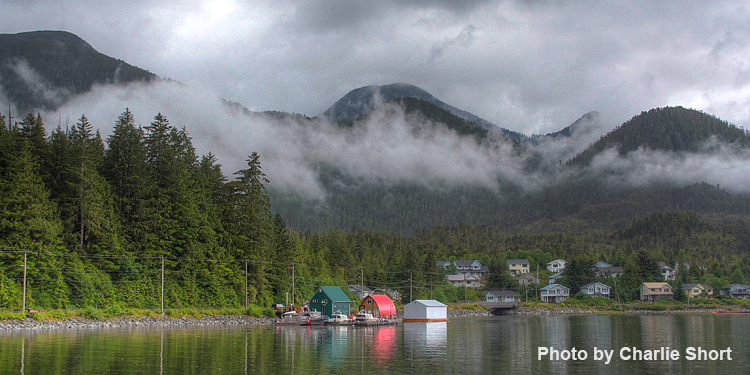
Change, growth & a new economy
In the recent past, the north coast and central coast communities depended primarily on logging and fishing industries. Today, the economy is becoming more diversified, with a focus on tourism and other sectors.
Approximately 18 000 people live in the Great Bear Rainforest. Bella Coola, Bella Bella, Ocean Falls, Wuikinuxv, Shearwater, Klemtu, Hartley Bay and Prince Rupert are the main communities, all of which can be reached by boat or airplane. Bella Coola, Bella Bella, Ocean Falls, Shearwater and Klemtu are also served by B.C. Ferries. Bella Coola and Prince Rupert are the only communities accessible by road.
Over centuries, the diversity of the life supported by the coastal and marine environments allowed complex and culturally-rich societies to develop. For the majority of First Nations in the Great Bear Rainforest, their culture relies on a close connection with the land and sea for spiritual, economic and food-source sustenance. Extended families live and work together on the water and on the land, passing along a rich and intimate knowledge of the environment from generation to generation.
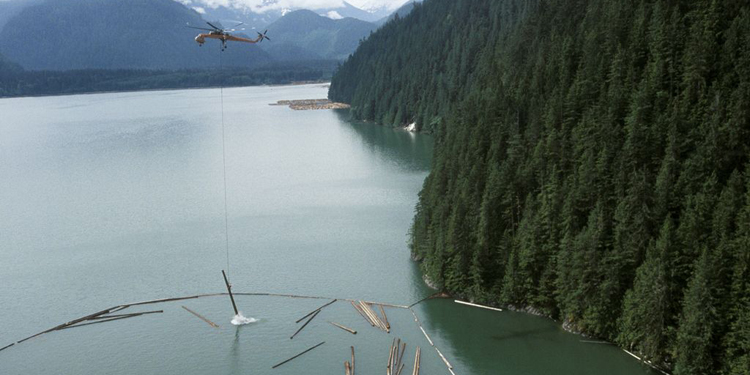
Social & Economic Considerations
Integrating social and economic considerations into eco-system-based management includes the following components:
- Interaction with all stakeholders and decision makers to develop their awareness of the key components of, and relationships between, economic, social and ecological systems.
- Analysis of current levels of social wellbeing, economic health and ecological integrity within communities and the management area.
- Development of a set of strong social and economic goals that reflect the diverse values held by all stakeholders, and are directed toward social well-being, economic health, and ecological integrity.
- Identification of discrepancies between the current social, economic and ecological conditions, the stakeholders’ goals and development of a plan to address discrepancies.
- Creation of social, economic, and ecological indicators to measure progress towards the goals and objectives.
- Implementation, monitoring and adaptation of the management plan in an ongoing learning process.
These steps will help to ensure an ecosystem-based management plan that strives for social wellbeing and economic health while operating within safe ecosystem limits. Achieving an appropriate mix of these three factors will help to achieve a long-term, sustainable land and resource management plan for the land and coastal regions of the Great Bear Rainforest.
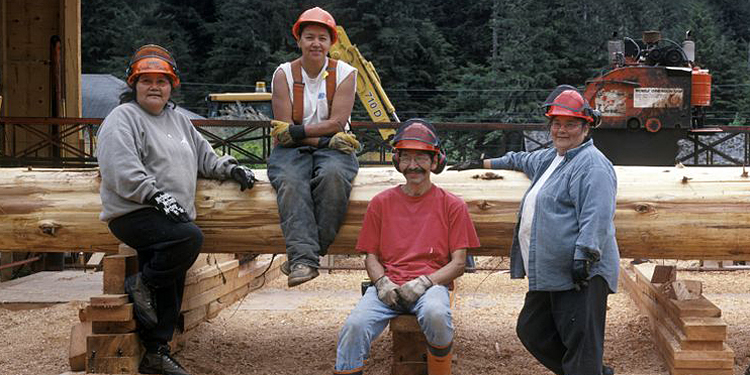
Forest Management
As a leader in sustainable forest management, B.C. manages ecological integrity and human well-being in the globally unique Great Bear Rainforest through ecosystem-based management (EBM). The collaboration among First Nations, the Government of B.C., environmental groups and forest companies has resulted in protecting 85% of the area’s forests, while providing jobs for First Nations, and offers certainty for forest companies which can still sustainably harvest 15% of the area’s forests.
Forests – and the wood products derived from them – play a critical role in mitigating climate change by storing carbon. This is just one of many important values managed in the Great Bear Rainforest. This region is supported by sustainable forest management and by the protection of old-growth values.
Rainforest values
These are some of the greatest ‘values’ which contribute to economic development opportunities from the Great Bear Rainforest:
- Renewable energy
- Carbon credits
- Forestry
- Forest products
- Ecotourism
Managing old-growth forests
The 2016 Great Bear Rainforest Land Use Order will, over time, conserve 70% of the natural range of old growth forests, with some minor exceptions, across the entire 6.4 million hectares (15.8 million acre) region.
Forests make up more than half of the Great Bear Rainforest which equals in size of 3.7 million hectares (9.1 million acres). The land use orders identify 550,000 hectares (1.36 million acres) of managed forest that will support a sustainable harvest, creating economic stability for First Nations, workers, communities, investors and an international timber-buying market.
Land-use Zones
One third of the Great Bear Rainforest is fully protected in parks and conservation areas with about 9% of the total area (about 15% of forested area) available for timber harvesting in the managed forest. The managed forest comprises 550,000 hectares (1.36 million acres) where harvesting decisions of old growth and second-growth trees are guided by ecosystem-based management.
Parks and Protected Areas
471,000 hectares (1.2 million acres) are fully protected.
Conservancies
1.5 million hectares (3.7 million acres) are designated as protected ecological assets recognized for their importance to First Nations.
Biodiversity, Mining & Tourism Areas
309,000 hectares (764,000 acres) are areas where the primary use is biodiversity conservation and protection of ecological and cultural values. Commercial forestry and hydroelectric generation linked to the power grid are not allowed.
Special Forest Management Areas
273,000 hectares (675,000 acres) are in areas where hydroelectric generation, mining and tourism development is allowed as long as it maintains ecological integrity. Commercial forestry is not allowed. It is expected that some of these areas will become biodiversity, mining, or tourism areas or conservancies over time.
Marine Plans
North Coast and Central Coast
Connections between the land, the sea and the people are valued, studied and routinely monitored in B.C.
Close to the announcement of the Great Bear Rainforest Agreement, the Province of British Columbia and 17 First Nations completed four marine plans that complement the ecosystem-based management approach as used on land.
In addition to the sub-regional marine plans, the Regional Action Framework, released in the spring of 2016, outlines actions related to marine management that the Province and First Nations agree will be most effectively implemented on a regional scale. These actions are consistent with, and support implementation of, the sub-regional marine plans.
Taken together, these plans will inform First Nations and provincial decision-making in the sub-regional coastal and marine areas. While the marine plans do not address management of uses and activities under the federal government’s jurisdiction, First Nations and the Province are committed to working with the federal government on those issues.
Did You Know?
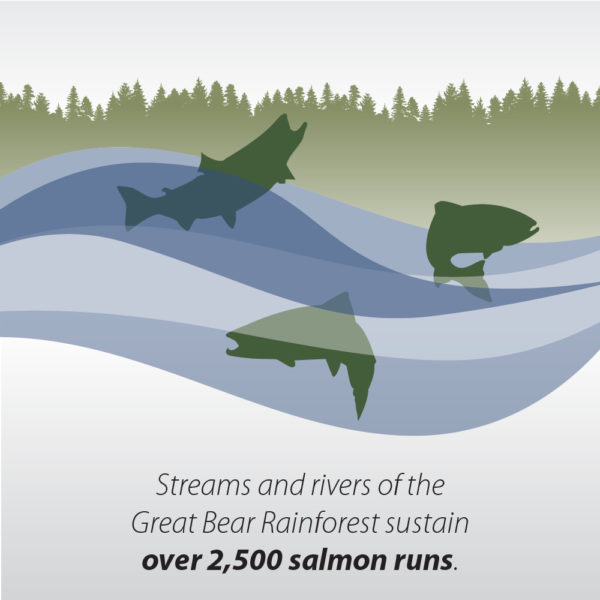
As our oceans become busier with increasing commercial, industrial and recreational activity, there is a growing need for marine planning to help guide decisions about their use. Marine plans help create opportunities for sustainable economic development, support the well-being of coastal communities and protect the marine environment.
The Marine Planning Partnership (MaPP) represents one of the largest marine spatial planning processes in the world using an ecosystem-based management approach in step with the achievements in the Great Bear Rainforest. This planning partnership has forged an unprecedented management approach in British Columbia, linking land and sea.

